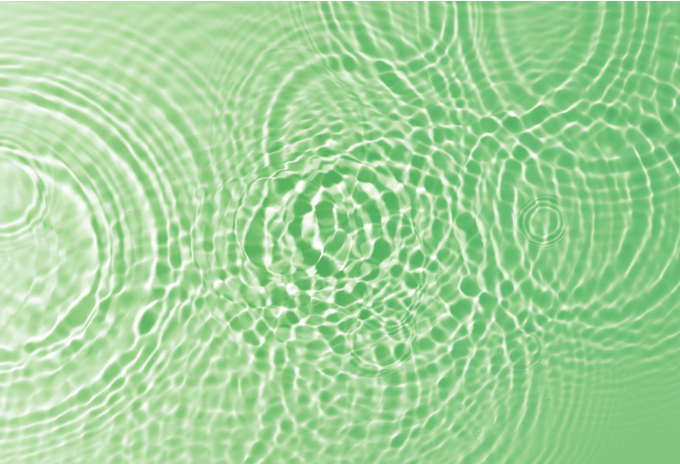
I am not only a Certified Pool and Spa Operator, but a Certified Algae Prevention and Eradication Specialist. I went to www.cpoclass.com to get my certification and will be referencing the accommodating textbook, “How to Get Rid of and Prevent Swimming Pool Algae”. Both of these are by Rudy Stankowitz.
Pool Algae - The Dreaded Foe
Swimming pool algae comes in a variety of colors, but no matter what color you are seeing, they all equal bad news. This means our water chemistry and/or circulation at some point was off. What I mean by this is that our sanitizer level dropped below the recommended range, our pH was off, and we had high phosphates, chloramines, and perhaps a combination of these. When I say ‘poor circulation’ I am referring to the circulation pumps having an issue or the filter(s) may have needed a cleaning. Both of these scenarios are preventable with a little knowledge and a lot of testing and observing our equipment.
If a health inspector sees visible algae in your body of water, this is not a good sign. He or she will certainly question not only your water chemistry balance but your competence as a swimming pool operator. Ouch!
What is Algae?
Algae is an actual living aquatic organism. Think of it as a water plant. Algae needs sunlight, phosphates, nitrates, and oxygen to grow. Because it is a plant, it uses the chlorophyll it contains and utilizes photosynthesis. Photosynthesis is when algae takes in carbon dioxide and expels oxygen
Green Algae
Green algae is definitely the most common form of algae one will see in the pool they manage. While the easiest to eradicate, it still makes more sense to prevent it. Did you know there are over 2,500 types of just green algae? Algae spores can be airborne too. In my experience, green algae developed by not having enough sanitizer in the water and not brushing the pool walls. The brushing aspect is true for all types of algae. You are going to see a common thread here when we are talking about prevention. Test, Test, TEST. Most swimming pool issues can be avoided by regular testing. With the Pool Shark H2O, this is an easy task. Whether paired with the Lamotte Spin Lab, or by manually inserting your results, you will catch low sanitizer and other unbalances waaaay before any algae spores take hold. Did you know by the time you can visibly see an algae bloom it has been going on for days? Why not let your Pool Shark H2O dole out the maintenance steps needed to get that body of water whacked back into shape before any problems. Testing often is not only wise–it’s the law.
Yellow/Mustard Algae
This algae, in my experience, is usually circulation related. Did you know that yellow algae is the only algae that can grow in a well-balanced swimming pool? This usually points to dead spots in the water or a dirty set of filters. Even though the water may be balanced on most levels, we need to focus on the food for algae: phosphates. Testing, and treating, for phosphates early can stop you from having a Las Vegas buffet laid out should a bloom occur. Luckily, phosphates is just one of many fields that the Pool Shark H2O tests for.
Yellow algae has multiple personalities. It can either be “dust-like or tenacious”, meaning it will either powder up when you brush it or take a foothold, usually in the shady, South side of your swimming pool. Yellow algae is actually a member of the group called diatoms, which contain over 17,000 species! Whatever species it is, it can be difficult to get rid of it. The diatom walls are made of a glass-like cell wall which can make it chemically resistant.
White Water Mold
This is actually not an algae, but is pretty gross nonetheless. It can take on the form of what looks like wet toilet paper floating in your body of water. It actually falls in the fungus family. The translucent yuck piles are parasitic, which means something is probably dead and decaying in your water. Better double check your skimmer and other baskets. The plumbing or the filter are other great hiding spots. This mess can harbor bacteria which could be dangerous for swimmers.
Pink Algae
This is actually the form of algae that is harmful. It is not an algae at all. It is a biofilm that can harbor a ton of bacteria, much like white water mold. It can cause serious illnesses, such as legionella. People with compromised immune systems are at a greater risk.
Black Algae
The most misunderstood of all the algaes. It is actually layers and layers of cyanobacteria in an “intertwined colony”. It does not have roots like many of us believed, myself included. Here we turn to a metal-based algaecide as that is the only way to be rid of black algae.
Is Pool Algae Harmful?
In and of itself, algae is not harmful. Remember, the harmful types above we mentioned are not actually algae. But the conditions that caused it most likely are. The solution? Test, Test, TEST! Find out those algae growing conditions before you get a bloom. The Pool Shark H2O App is your best friend in this. Not only will it tell you what is unbalanced, but what to do about it. Also, if anyone were to get sick, you have digital records to protect you because you can prove good water balance.
The moral of the story is we really have no excuse not to have well-balanced water with the Pool Shark H2O App at our fingertips. See you poolside!.


